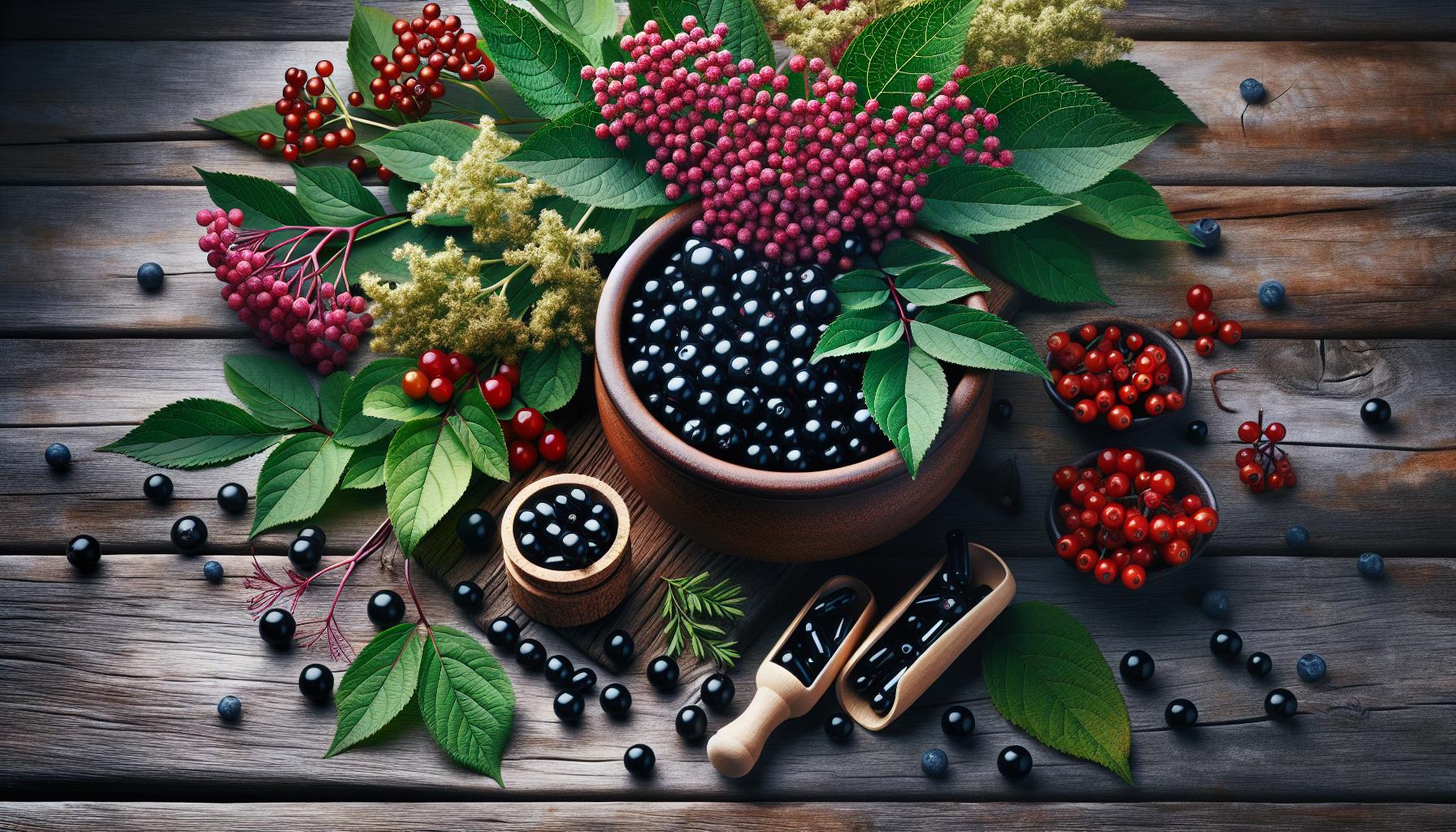
– Are there any specific pruning techniques recommended for elderberry plants?
Introduction
How often have you pondered on the idea of growing your own elderberries? This versatile plant with its tiny clustered fruits not only adds to the aesthetic beauty of your garden but also promises numerous health benefits, making it a perfect addition for your backyard. With the right guidance and patience, anyone can master the art of cultivating elderberries. This article will guide you, no matter your skill level, through the whole process of growing elderberries from scratch.
The Elderberry Essence
Elderberries are magical fruits with a rich history. They are not simply plants, but a symbol of protection and divination in folklore. These ancient plants with their wide-branched canopy flaunt tiny star-shaped flowers that dance in the wind, eventually giving way to clusters of dark purple fruits. Growing elderberries starts from understanding their fundamental needs which we’ll happily navigate together.
Understanding Elderberries
Growing in hardiness zones from 3 to 8, elderberries enjoy a variety of climates. They are a hardy bunch, not picky about soil type and can thrive well on fertile, well-draining soil. These perennials love the sun but can tolerate partial shade, making them quite the flexible choice for your garden.
Getting Started with Planting
You might think that this gift from Mother Nature is hard to grow, but on the contrary, it’s as easy as pie. With plenty of elderberry plants available in markets, choosing the right variety is your first step to a fruitful harvest.
Prepping for Planting
Once you’ve picked your elderberry plant, the next task is to prep your planting site. It’s as simple as digging a hole twice the size of your elderberry plant’s root ball, ensuring good root spread and growth. Remember to make sure your chosen spot has ample sunlight access and good soil, as these are two essentials for growing elderberries.
Caring for Your Elderberry Plant
Caring for your elderberry plant is not an uphill battle, it’s much like caring for a child. Regular watering, good quality fertilizers, and a little bit of pruning here and there can work wonders on your plant’s growth and harvest.
Nurturing and Pruning
Elderberries are for the most part, low maintenance plants. Regularly watering them during dry spells and mulching their root area promises strong growth. Pruning comes into the picture a couple of years after planting. Doing so regularly will stimulate better fruit production and prevent disease.
Harvesting Your Elderberries
The satisfaction derived from gathering the fruits of labor, smacking of a sweetness hard to compare. Once your elderberry plant reaches maturity, generally in its second or third year, you will be rewarded with your first harvest.
The Delight of Harvesting
When your elderberry clusters turn dark in color, it’s a sign they are ripe and ready to be harvested. Be conscious of the fact that elderberries are not suitable for direct consumption due to their natural bitterness and toxicity; they are cooked or processed into syrups, jellies, and wines, all of which harbor their health benefits.
Conclusion
Just like every new journey, it can feel a bit daunting to begin growing elderberries, but with this guide, you should be well-equipped to start your nurturing voyage. The joy of watching your elderberry plant flourish is truly rewarding. So, let’s pull up our gardening gloves, and embark on the journey of growing elderberries right at home.
Frequently Asked Questions
1. Do elderberries need a lot of water?
Elderberries are drought tolerant but for optimal growth, they prefer moist, well-draining soil. Be careful not to overwater as it may cause root rot.
2. Can you eat elderberries off the plant?
It is essential to cook elderberries before consuming, due to some bitterness and possible toxicity.
3. How long does it take for elderberries to grow?
Elderberries generally bear fruit in their second or third year, and continue fruiting for numerous years thereafter.
4. Do you need two elderberry plants to produce fruit?
While elderberries can self-pollinate, planting more than one variety will result in a more bountiful harvest due to cross-pollination.
5. Are there different types of elderberry plants?
Yes, there are many types of elderberry plants, two of the most common being the European elderberry (Sambucus nigra) and the American elderberry (Sambucus canadensis). Both can make a wonderful addition to your home garden.


